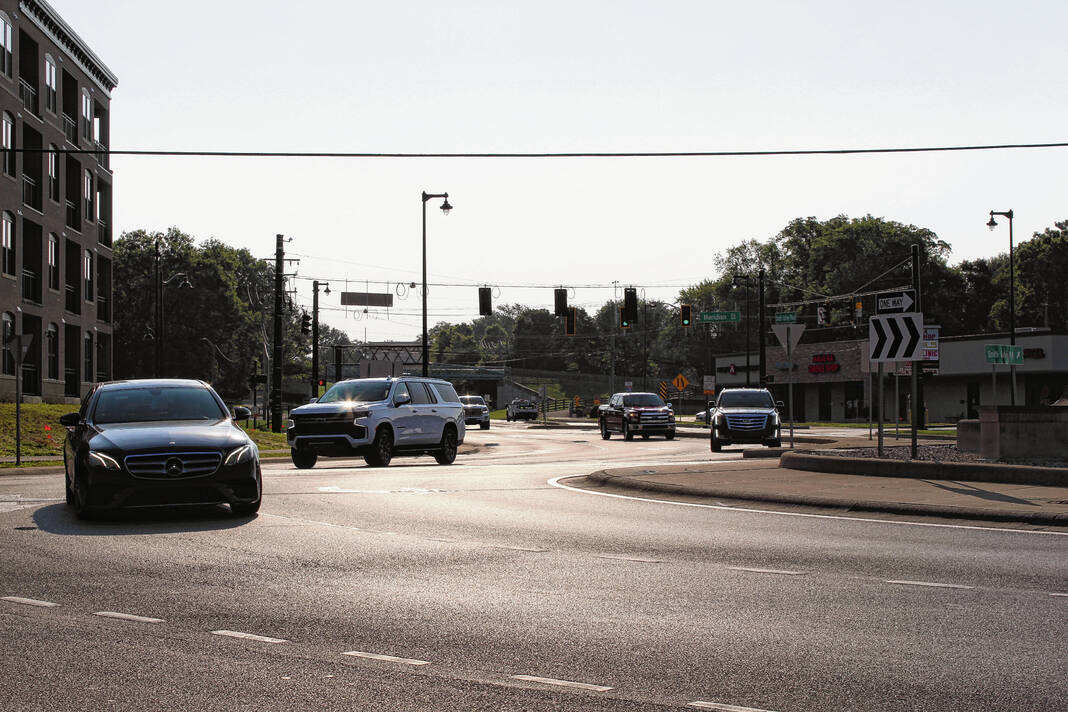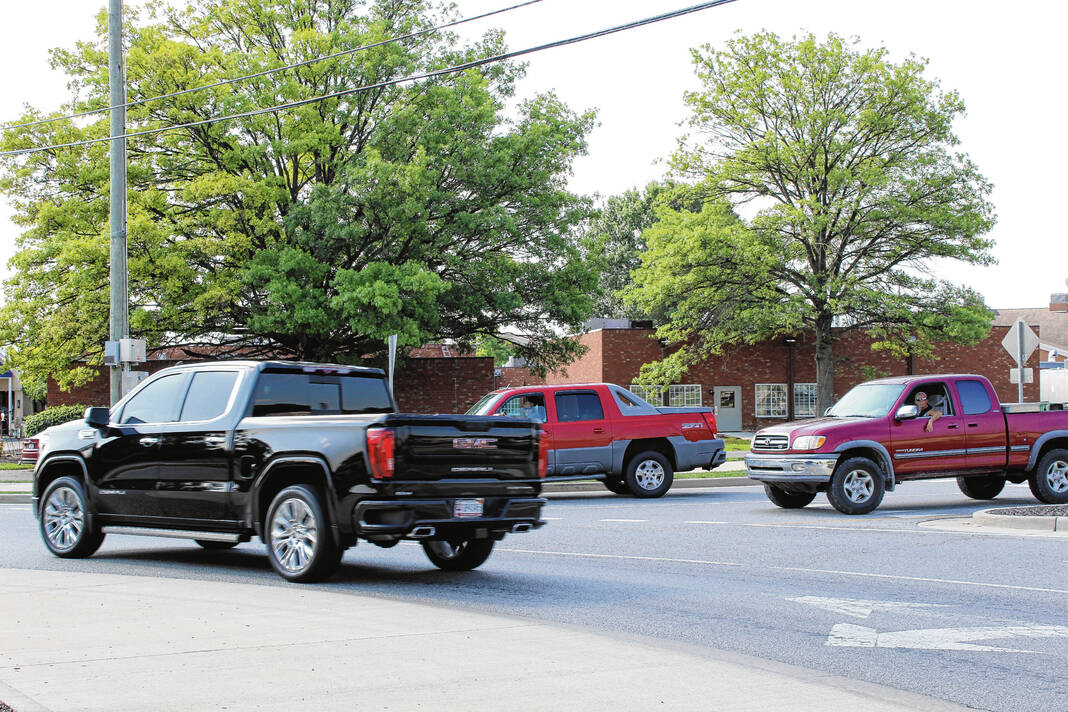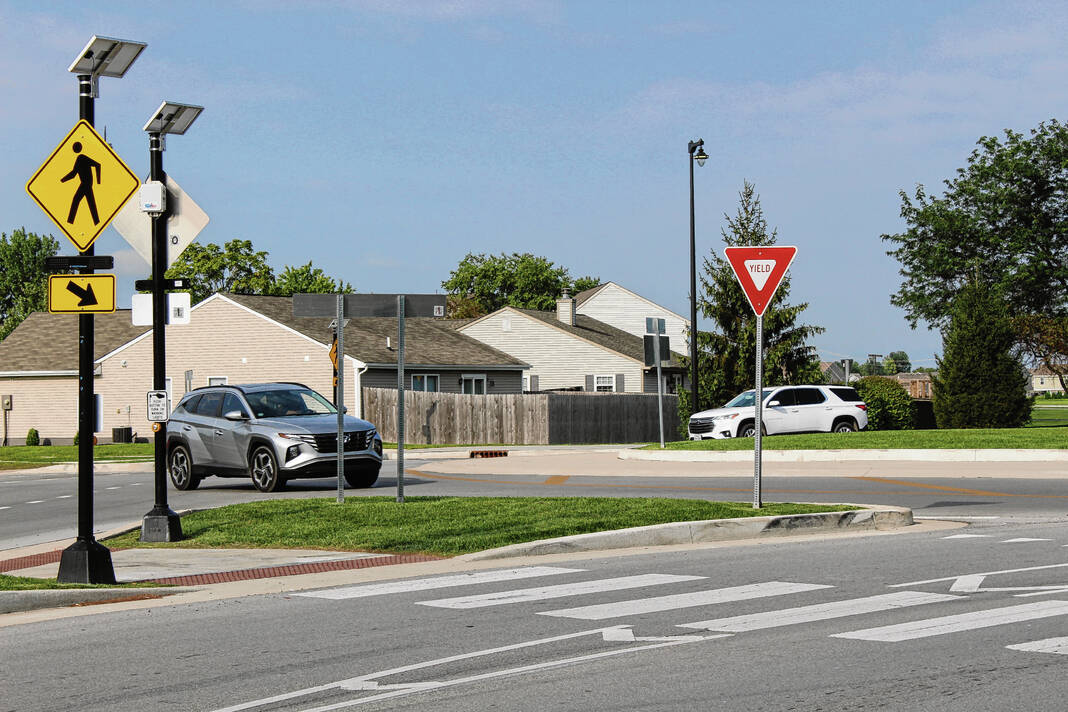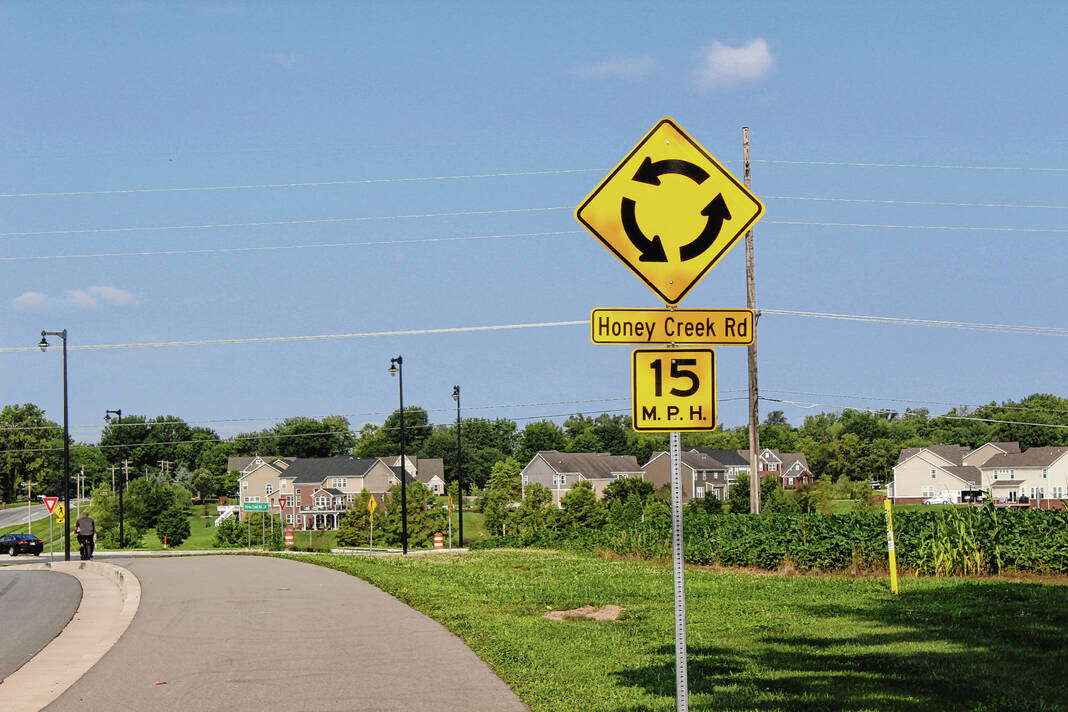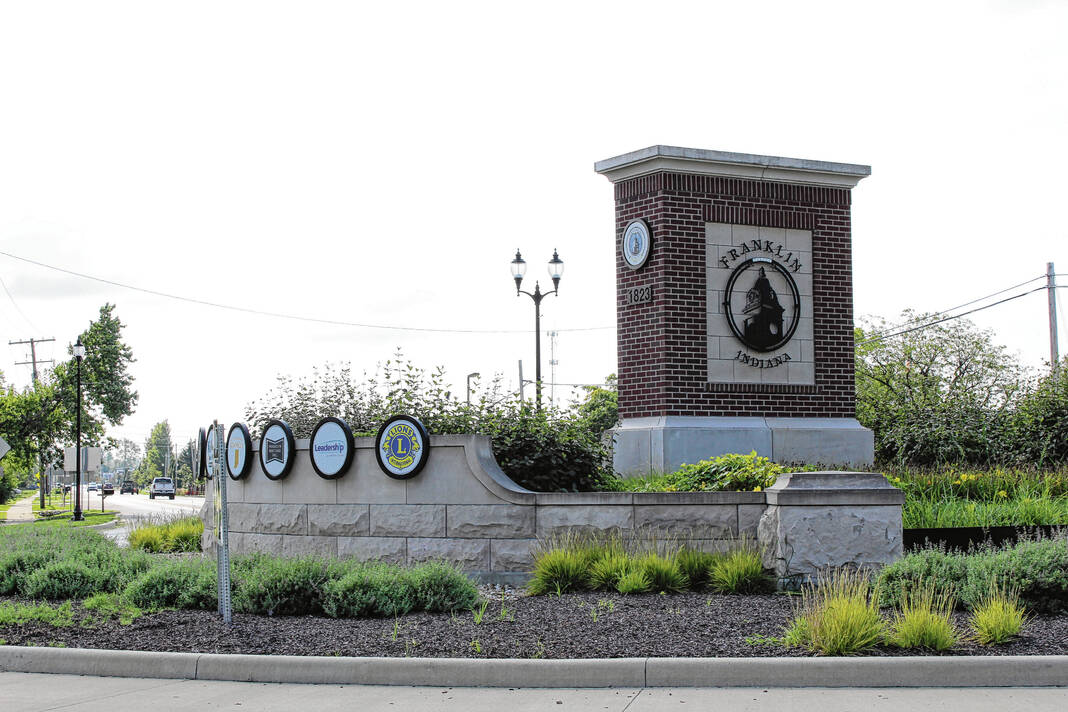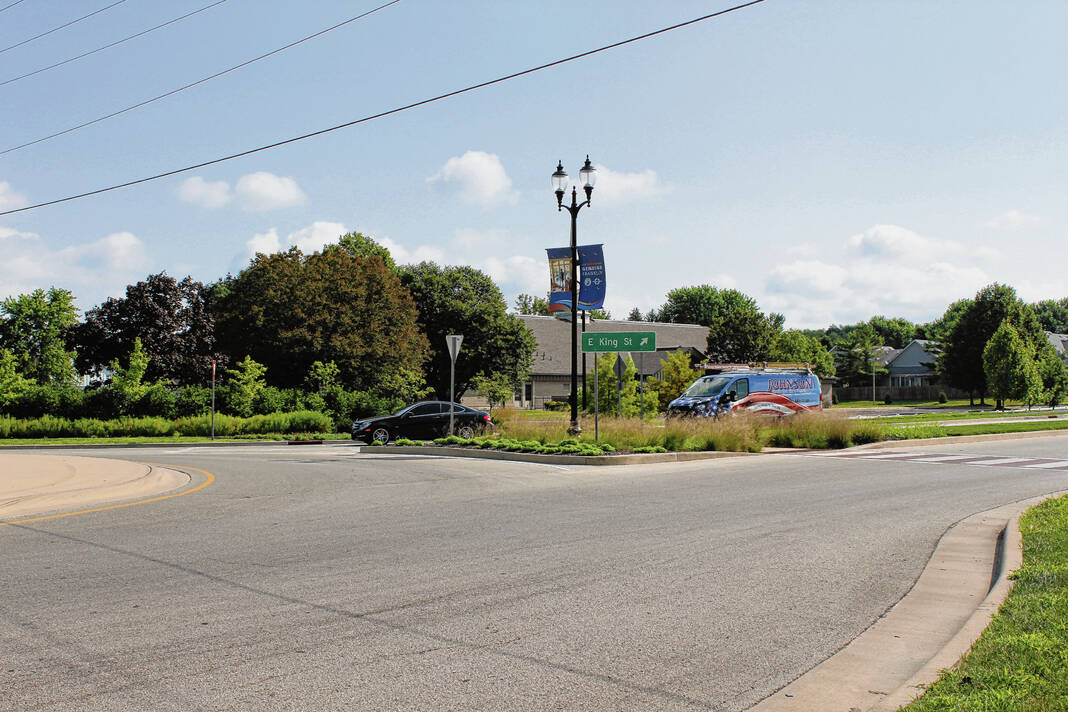They are popping up more and more in Central Indiana and Johnson County.
Oftentimes, roundabouts are decried by residents and those on social media as unnecessary and confusing. But local officials and experts say they do have a purpose and drivers can adapt and learn how to properly use them.
Roundabouts are circular intersections that safely and efficiently move traffic, according to the Federal Highway Administration. With the construction of roundabouts all over Johnson County both finished and underway, residents can expect more traditional, 4-way intersections to be replaced with roundabouts as time goes on.
Roundabouts are a way to address traffic volume in growing cities while maintaining a safe and efficient road environment, said Matt McElroy, an assistant city engineer for the city of Franklin.
“So that growth, obviously, you know, housing shortages and stuff like that, like we’re seeing a lot of home builders move in here,” McElroy said. “And you know, what to expand you know, the properties out here for people to move to town. So that’s where we see that growth and you got a lot of businesses that are moving to town, so the jobs open up. So that’s where that expansion we see comes from.”
How many are there?
There are 36 roundabouts right now in Johnson County, according to a national roundabout database compiled by Kittelson & Associates, Inc. Severalof those roundabouts are on the on/off ramps of Interstate 69 and are maintained by the Indiana Department of Transportation.
In Franklin, there are eight roundabouts with two more currently being built, said Mark Richards, city engineer. The city is a bit behind schedule with one roundabout that is underway at Graham Road and Earlywood Drive. The expected opening date has moved from early August to mid-September.
Once that roundabout is complete, Richards said construction on a roundabout located at Graham Road and Paul Hand Boulevard will begin. It is expected to open before Thanksgiving.
There are seven roundabouts in Greenwood with two more planned to be constructed in the near future, said Mark St. John, city engineer. One will be at the intersection of Smith Valley and Averitt roads, with the other just east at Smith Valley Road and Woodman Boulevard — near Greenwood Community High School.
St. John said the city is also close to finishing the design process for two additional roundabouts.
“I think we’re getting ready to start design on another roundabout that would be at Main Street and Airport Parkway,” St. John said, “And then there’s several locations across the city that I think, long-term, will be roundabout at some point. It’s just a matter of having enough growth in those areas and having the funding available to build those roundabouts.”
There is also one roundabout in Whiteland, two in Bargersville and six in White River Township.
Determining the need
When considering the construction of a roundabout, McElroy said city engineers start by looking at traffic data or studies to determine the growth of the area, along with how many crashes have occurred at the intersection, in order to figure out the intersections that would benefit most from a roundabout.
In Greenwood, the process begins similarly. Officials start with studies that look into the history of crashes at an intersection to determine whether a roundabout would alleviate some of the danger for drivers. Next, officials analyze data to ensure that a proposed roundabout would be efficient now and in the future, St. John said.
Finally, because roundabouts take up more space than traditional intersections, the city officials evaluate whether they will have to purchase homes or move businesses to make space for the new roundabout, St. John said.
After the need for a roundabout is established, the design and construction process begins. Officials also look at how to fund it, McElroy said.
“So that’s where it all starts,” McElroy said.
Depending on the complexity and funding requirements, designing a new roundabout can take anywhere from a year to 2.5 years. Part of this delay is because cities have to acquire the right-of-way in most instances from property owners adjacent to the proposed roundabout, Richards said.
“We go through a negotiation process with the property owner, and that can typically take up to about a year for a project,” Richards said. “Once that’s complete, we go through bidding and select a contractor, then we go to construction. Construction is generally about a year to two-year process, again, depending on complexity and not all of that is a process where the intersection is closed down.”
For instances where an intersection must be closed down, usually, it takes about two months, Richards said.
Traffic safety
The general sentiment surrounding roundabouts is that they decrease the likelihood of fatal or incapacitating crashes because of the way a roundabout works. Roundabouts typically have a speed limit of 15 mph, and most of the crashes that occur are minor fender-benders, Richards said.
While data comparing the number of crashes before and after a roundabout was constructed is available, it is difficult to get an accurate number, as drivers who have a collision in a roundabout usually pull off to another road before calling the police, said Maj. Andy Fisher, road division commander for the Johnson County Sheriff’s Office. The crash is then reported as the other street rather than the roundabout itself, making it hard to track where the crash truly occurred.
However, Fisher said that because roundabouts allow traffic to flow more smoothly, they definitely do contribute to a lower number of crashes.
“It’s allowing the motoring public to get through an area without having to stop and know that, ‘OK if I’m going north and you’re coming south or someone’s coming, I know that I can manipulate this and utilize whatever exit I need to do to go that direction I can,’” Fisher said. “Whereas before, when you’re just dealing with a four-way intersection … there are times that folks don’t know exactly who was there first or may not pay attention and actually run through the intersection.”
An obvious reason for crashes at traditional intersections is drivers not abiding by traffic laws, Fisher said. In Greenwood, for instance, failure to yield the right of way, such as at stoplights or intersections, made up the majority of the primary causes of motor vehicle crashes, according to the Greenwood Police Department’s 2023 annual report.
Additionally, since roundabouts are a fairly recent innovation in traffic safety, not everyone knows how to use them — thus, causing crashes due to misuse.
In Franklin, there have been only two incapacitating crashes at roundabout-converted intersections. Pre-conversion, there were 12, Richards said.
Nationally, St. John said roundabouts are called a “proven safety countermeasure” by the Federal Highway Administration. Replacing signalized intersections with roundabouts marked a 78% reduction in fatal and injury-causing crashes, according to the FHA. For two-way stop-controlled intersections that were replaced by roundabouts, it reduced them by 82%, federal officials say.
Essentially, because roundabouts maintain a lower speed limit and provide a smoother flow of traffic, crashes, in general, are less likely to occur, officials said.
Another incentive to replace intersections with roundabouts is the potential positive impact it can have on the environment — particularly concerning air pollution. McElroy said that, from an environmental standpoint, roundabouts prove better for maintaining good air quality because cars are not sitting idle and running. This, in turn, increases the emissions from cars and increases air pollution, he said.
Roundabouts in Carmel have been determined to be significantly cheaper to build than traditional intersections, saving $5,000 per year in electricity costs, according to the FHA. Additionally, because fewer cars are idling using roundabout intersections, lower carbon emissions were indicated in Carmel.
Studies conducted in other states, such as one study evaluating intersections near Bellingham, Washington, indicate substantial declines in delays, queue lengths on minor roads, the proportion of queued vehicles, fuel consumption and vehicle emissions.
LEARN MORE
Read about how to properly use a roundabout by clicking here.


